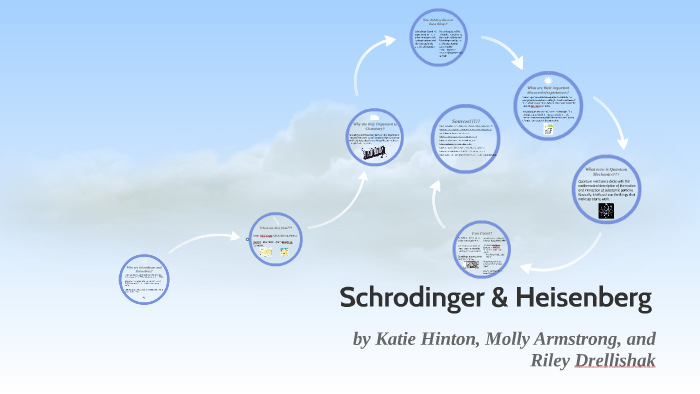

It was during this romantic interlude that Schrödinger arrived at his version of quantum mechanics, which, for a period of time, was called wave mechanics to distinguish it from Heisen-berg's quantum mechanics. Accompanying Schrödinger was a young woman, whose identity remains a mystery. The holiday at the Villa Herwig in Arosa was special. Finally, we know that Schrödinger left for a holiday shortly before Christmas 1925 and did not return until early January 1926.

Still further, we know that Schrödinger was philosophically attracted to the continuity of waves and the way waves are repre sented mathematically. Unfortunately, no manuscript of Schrödinger's relativistic version exists. Had he known about electron spin, discovered a short time earlier, his rel-ativistic result would have been very encouraging indeed. In fact, evidence suggests that Schrödinger first arrived at a relativistic form of his famous wave equation, which he rejected because it seemed at odds with available data. And we know further that Schrödinger went to work attempting to generalize de Broglie's concept of matter waves and treated it in the context of relativity theory. The colloquium probably occurred in November, shortly after Schrödinger posted his letter to Einstein. Schrödinger sent a letter to Einstein on November 3 in which he wrote, "A few days ago I read with the greatest interest the ingenious thesis of Louis de Broglie, which I finally got hold of."1 We also know that Peter Debye, Schrödinger's colleague in Zurich, suggested that Schrödinger give a talk on the de Broglie paper at the joint Zurich Federal Institute of Technology (E.T.H.)-University of Zürich colloquium. We know, for example, that in late 1925 Schrödinger read Louis de Broglie's paper in which the young de Broglie proposed that particles have an associated wavelength. Second, Schrödinger's insights apparently came to him over such a compressed time period that attempts to reconstruct the evolution of his thought processes are difficult. Schrödinger himself never provided a chronological account of how he arrived at his famous result. He did keep journals, but key journals in this sequence have been lost. First, unlike Heisenberg, who chronicled his thoughts in letters to Pauli and others, Schrödinger did not reveal himself as extensively in letters. Two stumbling blocks make it difficult to track the thought processes that led to his classic papers. In this first paper, Schrödinger developed his version of quantum mechanics with the aid of the hydrogen atom. All the papers were fundamentally important, but the first paper was special. This paper was the first of six papers that Schrödinger, in an outburst of creative activity, wrote during the first six months of 1926. The author was Erwin Schrödinger, a professor of theoretical physics at the University of Zurich (see Figure 8.1). On January 27, 1926, a manuscript containing a third version was received by the editors of the prestigious German physics journal Annalen der Physik. At the beginning of 1926, there were essentially two versions of quantum mechanics. Tems, the intellectual logjam broke open and there was an outpouring of epoch-making results. After years of intense efforts to develop a coherent quantum theory to explain the results of experimental measurements on atomic sys- Figure 8.1 Erwin Schrödinger. After we consider Schrodinger's role in the creation of quantum mechanics, we shall return to the curious cat.įrom mid-1925 through the early months of 1926, events relating to quantum mechanics occurred in rapid succession.

Recently, the cat moved from the realm of the imagination into the laboratory. And because the interpretation of quantum mechanics has proven so provocative and continues to challenge our understanding, Schrodinger's imaginary cat still lives. This imaginary cat was invented in 1935 as part of a thought experiment designed to probe the implications of the subject that Schrodinger himself helped to create-quantum mechanics. Physicists are enamored with numbers, so imaginary numbers are not that surprising however, it is a bit surprising that an imaginary cat appears in the lore of physics. Numbers are so important in physics that real numbers alone are not enough: imaginary numbers are also used and often appear in the equations of physics. In its special role as the simplest of all atoms, hydrogen has starred in some great episodes in the history of science.


 0 kommentar(er)
0 kommentar(er)
